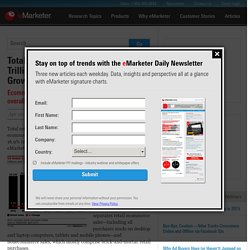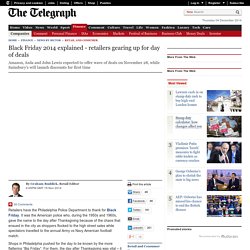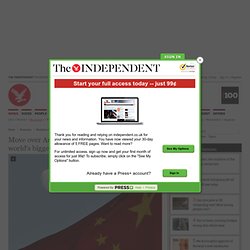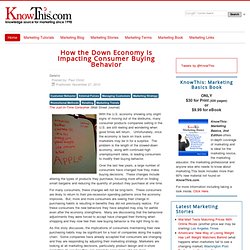

Welcome to Inc.com. U.S. Retail Sales Fall 0.3% in September - WSJ. Page. Total US Retail Sales Top $4.5 Trillion in 2013, Outpace GDP Growth. Total retail sales in the US topped $4.53 trillion in 2013, and ecommerce accounted for a significant portion of that growth, up 16.9% in 2013—or nearly $40 billion—according to new figures from eMarketer.

This is eMarketer’s first-ever benchmark of total retail and retail store sales, which are based on a multimodel analysis of 169 data points that eMarketer gathered from 47 research firms and government institutions. The forecast separates retail ecommerce sales—including all purchases made on desktop and laptop computers, tablets and mobile phones—and nonecommerce sales, which mostly comprise brick-and-mortar retail purchases. Retail growth is a reflection of what’s happening in the broader economy, which is gaining momentum. The Dow Jones Industrial Average reached a new high early in 2014, and consumer confidence, as measured by The Conference Board’s Consumer Confidence Index, rose in February after three months of decline.
Up Coldwater Creek Without a Paddle. What is Black Friday? In the UK, however, Black Friday meant little until 2010.

Before then, the only knowledge most shoppers had about the US craze was the television images of consumers fighting to get into the leading stores, such as Macy’s in New York. The nearest phenomenon in the UK was Boxing Day and its ubiquitous sales. But the online shopping revolution and the rise of multinational retailers eventually brought Black Friday across the Atlantic. Four years ago, Amazon started offering Black Friday discounts in Britain. Year by year, its promotions became more widespread and other retailers joined in.
Black Friday hit critical mass in Britain last year when Asda, which is owned by America’s biggest retailer Walmart, ran flash promotions within stores. However, this year, the day is expected to be even busier. Black Friday shopping? “This year, we are offering more deals and savings than ever before and we are expecting record numbers to benefit from Black Friday Deals Week.” Rediscovering Retail’s Past: An Interview with Jan Whitaker, author of Service and Style: How the American Department Store Fashioned the Middle Class. I’ve referred and linked to Service and Style: How the American Department Store Fashioned the Middle Class by Jan Whitaker many times in this blog.

The book, and its corresponding website The History of Department Stores, are to me and to countless others the definitive source of information about this element of America’s retail past. Move over America: China overtakes US as world's biggest economy (kind of) - Business News - Business - The Independent. According to the International Monetary Fund the combined purchasing power of China's citizens now outstrips that of America's.

And by the end of the year will China should make up 16.48 per cent of the world's purchasing-power adjusted GDP for a total of $17.632 trillion (£11 trillion). The US, by contrast, will make up 16.28 per cent, or $17.416 trillion. Purchasing power parity seeks to address the fact that while wages tend to be lower in “developing” countries than in mature economies like the US, the price of goods and servicing is also typically much lower. How the Down Economy Is Impacting Consumer Buying Behavior. Details Posted by: Paul Christ The Just-in-Time Consumer (Wall Street Journal) With the U.S. economy showing only slight signs of moving out of the doldrums, many consumer products companies selling in the U.S. are still reeling and wondering when good times will return.

Unfortunately, once the economy is back on track some marketers may be in for a surprise. The problem is the length of the slowed-down economy, along with continued high unemployment rates, is leading consumers to modify their buying behavior. Over the last few years, a large number of consumers have changed how they make buying decisions. For many consumers, these changes will not be long-term.
As this story discusses, the implications of consumers maintaining their new purchasing habits may be significant for a host of companies along the supply chain. The Great Depression replaced a spendthrift culture with a generation of frugal savers. In what other ways is the economic climate forcing consumers to change? Welcome to Forbes. STUDY: Millennial Shoppers More Likely to Embrace Non-Traditional Retail Environments, Trend of Store Category Blurring Appears Strong, Top US Retailers Ranked.
Eugene, OR (PRWEB) February 14, 2014 The results of a Fall 2013 survey of over 1200 U.S.

Millennial, Generation X, and Baby Boomer consumers, conducted by retail design firm King Retail Solutions (“KRS”), emphasized the changing face of the retail industry and shoppers’ evolving attitudes towards where they will shop for groceries, fresh meals, apparel, and services ranging from haircuts to medical treatment. Equal parts male/female, and located in urban, suburban, and rural areas across the United Stated, shoppers were polled on their past shopping habits, their current shopping attitudes, their decision making factors, and their top preferred retailers (Target, Walmart, Walgreens, and Costco topped the list in each category), all as relates to purchasing these types of goods from a non-traditional source (e.g., purchasing a fresh meal from a pharmacy or a hair cut from a big box store). To request a PDF or hard copy of the study, please email press(at)kingrs(dot)com.